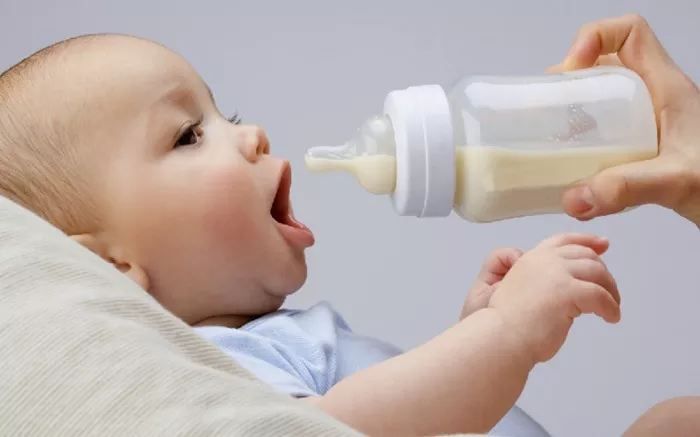Hiccups are a common occurrence in newborns, often alarming new parents. Understanding the reasons behind this phenomenon can help parents feel more at ease. This article explores the causes, mechanisms, and management of hiccups in newborns after feeding.
Understanding Hiccups in Newborns
What Are Hiccups?
Hiccups are involuntary contractions of the diaphragm. When the diaphragm contracts, the vocal cords snap shut, producing the characteristic “hic” sound. Hiccups can happen to anyone, but they are particularly common in infants.
How Do Hiccups Develop?
Hiccups in newborns typically develop through a process involving the central nervous system and the diaphragm. When the diaphragm experiences sudden contractions, it results in a spasm that leads to hiccups.
Normal Hiccups in Infants
It is essential to recognize that hiccups are generally a normal part of infant development. Most infants experience hiccups frequently, especially in the early months of life.
Causes of Hiccups in Newborns After Feeding
1. Overeating
Feeding Amounts and Frequency
Newborns have small stomachs. When they consume more milk than their stomach can comfortably hold, the excess volume can cause the stomach to distend. This distension can irritate the diaphragm and lead to hiccups.
Signs of Overfeeding
Signs of overfeeding may include fussiness, frequent spitting up, or visible discomfort. Understanding these cues can help parents regulate feeding amounts better.
2. Swallowing Air
How Air Enters the Stomach
When newborns feed, they can inadvertently swallow air, especially if they feed too quickly. This air can accumulate in the stomach, contributing to the sensation of fullness and leading to hiccups.
Feeding Techniques to Reduce Air Swallowing
To minimize air swallowing, caregivers can try:
Keeping the baby in a more upright position during feeding.
Using slow-flow nipples for bottle-fed babies.
Ensuring the baby has a good latch during breastfeeding.
3. Rapid Feeding
Impact of Feeding Speed
Newborns may feed quickly due to hunger, which can lead to an increased likelihood of swallowing air. This rapid intake can overwhelm the stomach, resulting in hiccups.
Strategies to Slow Down Feeding
To help slow down feeding, caregivers can:
Offer smaller, more frequent feedings.
Pause during feedings to allow the baby to rest.
Encourage breaks for burping during the feeding session.
4. Temperature Changes
How Temperature Affects Hiccups
Sudden changes in temperature can also provoke hiccups. For example, if a baby transitions from a warm feeding environment to a cooler room, the body’s response may trigger hiccups.
Maintaining Comfortable Conditions
Parents can help manage temperature by:
Ensuring the feeding area is comfortably warm.
Avoiding drafts during feeding times.
Dressing the baby in layers to regulate temperature effectively.
5. Excitement or Stress
Emotional Responses in Infants
Newborns can experience excitement or stress during feeding, leading to increased muscle tension and hiccups. Stressors can include noise, bright lights, or changes in caregiver demeanor.
Creating a Calm Feeding Environment
To promote a calm feeding experience, caregivers can:
Reduce environmental noise and distractions.
Use soft lighting during feeding times.
Maintain a gentle and soothing demeanor.
When to Be Concerned About Hiccups
Normal vs. Worrisome Hiccups
While hiccups are typically harmless, parents should be aware of signs that may indicate a need for medical advice. Hiccups that last longer than 15 minutes, cause distress to the baby, or are accompanied by other concerning symptoms (like vomiting or breathing difficulties) should be discussed with a pediatrician.
Monitoring Hiccups
Keeping track of the frequency and duration of hiccups can help parents understand if their baby’s hiccups are within a normal range.
Managing Hiccups in Newborns
1. Burping Techniques
Importance of Burping
Burping helps release trapped air in the stomach and can alleviate discomfort caused by hiccups.
Effective Burping Methods
Common burping techniques include:
Holding the baby upright against the caregiver’s shoulder.
Sitting the baby on the caregiver’s lap and gently patting the back.
Laying the baby face down across the caregiver’s lap for gentle pressure on the abdomen.
2. Feeding Adjustments
Changing Feeding Practices
Adapting feeding methods can reduce hiccups.
Recommendations for Feeding
Caregivers can consider:
Offering smaller amounts more frequently.
Allowing breaks during feeding to burp the baby.
Observing the baby’s cues to determine hunger and fullness.
3. Calming Techniques
Creating a Relaxing Atmosphere
Helping a baby relax during and after feeding can be beneficial.
Soothing Approaches
Caregivers can use methods such as:
Rocking the baby gently.
Singing soft lullabies or playing calming music.
Using gentle motions, like swaddling or using a baby carrier.
Conclusion
Hiccups in newbornsafter feeding are common and typically harmless. Understanding the causes—such as overeating, swallowing air, rapid feeding, temperature changes, and emotional responses—can help parents manage this phenomenon effectively. By employing appropriate feeding techniques, creating a calming environment, and monitoring the baby’s cues, caregivers can minimize hiccups and ensure a more comfortable feeding experience.
Parents should remain observant and consult healthcare professionals if they have concerns about their baby’s hiccups, especially if they persist beyond typical patterns or are accompanied by other concerning symptoms.
Related Topics:


